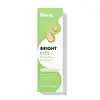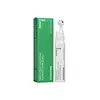What's inside
What's inside
 Key Ingredients
Key Ingredients

 Benefits
Benefits

 Concerns
Concerns

No concerns
 Ingredients Side-by-side
Ingredients Side-by-side

Water
Skin ConditioningC13-15 Alkane
SolventPropanediol
SolventDiisostearyl Malate
EmollientCaprylic/Capric Triglyceride
MaskingSynthetic Fluorphlogopite
Glycerin
Humectant1,2-Hexanediol
Skin ConditioningCaffeine
Skin ConditioningCetearyl Alcohol
EmollientHelianthus Annuus Seed Oil Unsaponifiables
EmollientCoffea Arabica Seed Extract
MaskingAllantoin
Skin ConditioningTocopherol
AntioxidantNiacinamide
SmoothingHydrogenated Rapeseed Oil
EmollientFucus Vesiculosus Extract
EmollientPolymethyl Methacrylate
Cetearyl Glucoside
EmulsifyingVaccinium Macrocarpon Seed Oil
Skin ConditioningOctyldodecanol
EmollientHydroxyethyl Acrylate/Sodium Acryloyldimethyl Taurate Copolymer
Emulsion StabilisingPanax Quinquefolius Root Extract
AstringentHaematococcus Pluvialis Extract
AntioxidantAcrylates/C10-30 Alkyl Acrylate Crosspolymer
Emulsion StabilisingLecithin
EmollientBehenyl Alcohol
EmollientArachidyl Glucoside
EmulsifyingXanthan Gum
EmulsifyingPotassium Hydroxide
BufferingSodium Dilauramidoglutamide Lysine
HumectantArachidyl Alcohol
EmollientSodium Phytate
Hexylene Glycol
EmulsifyingSorbitan Isostearate
EmulsifyingMalic Acid
BufferingCaprylyl Glycol
EmollientTin Oxide
AbrasiveGlucose
HumectantAstaxanthin
Skin ConditioningMica
Cosmetic ColorantCI 77891
Cosmetic ColorantCI 77492
Cosmetic ColorantWater, C13-15 Alkane, Propanediol, Diisostearyl Malate, Caprylic/Capric Triglyceride, Synthetic Fluorphlogopite, Glycerin, 1,2-Hexanediol, Caffeine, Cetearyl Alcohol, Helianthus Annuus Seed Oil Unsaponifiables, Coffea Arabica Seed Extract, Allantoin, Tocopherol, Niacinamide, Hydrogenated Rapeseed Oil, Fucus Vesiculosus Extract, Polymethyl Methacrylate, Cetearyl Glucoside, Vaccinium Macrocarpon Seed Oil, Octyldodecanol, Hydroxyethyl Acrylate/Sodium Acryloyldimethyl Taurate Copolymer, Panax Quinquefolius Root Extract, Haematococcus Pluvialis Extract, Acrylates/C10-30 Alkyl Acrylate Crosspolymer, Lecithin, Behenyl Alcohol, Arachidyl Glucoside, Xanthan Gum, Potassium Hydroxide, Sodium Dilauramidoglutamide Lysine, Arachidyl Alcohol, Sodium Phytate, Hexylene Glycol, Sorbitan Isostearate, Malic Acid, Caprylyl Glycol, Tin Oxide, Glucose, Astaxanthin, Mica, CI 77891, CI 77492
Water
Skin ConditioningButylene Glycol
HumectantGlycerin
HumectantPropanediol
SolventNiacinamide
SmoothingDimethicone
EmollientPhenyl Trimethicone
Skin ConditioningCaffeine
Skin Conditioning1,2-Hexanediol
Skin ConditioningSqualane
EmollientPolysorbate 20
EmulsifyingPolysilicone-11
PCA Dimethicone
Skin ConditioningPolyacrylate Crosspolymer-6
Emulsion StabilisingCarbomer
Emulsion StabilisingBoron Nitride
AbsorbentSodium Polyacryloyldimethyl Taurate
Emulsion StabilisingCI 77891
Cosmetic ColorantTromethamine
BufferingDimethiconol
EmollientSynthetic Fluorphlogopite
Glyceryl Caprylate
EmollientEthylhexylglycerin
Skin ConditioningAdenosine
Skin ConditioningDisodium EDTA
Camellia Sinensis Leaf Extract
AntimicrobialArginine
MaskingCyclodextrin
AbsorbentHydroxypropyl Cyclodextrin
MaskingMaltodextrin
AbsorbentCitric Acid
BufferingSodium Hyaluronate
HumectantTin Oxide
AbrasiveHydrolyzed Hyaluronic Acid
HumectantSodium Hyaluronate Crosspolymer
HumectantHyaluronic Acid
HumectantTocopherol
AntioxidantSodium Acetylated Hyaluronate
HumectantWater, Butylene Glycol, Glycerin, Propanediol, Niacinamide, Dimethicone, Phenyl Trimethicone, Caffeine, 1,2-Hexanediol, Squalane, Polysorbate 20, Polysilicone-11, PCA Dimethicone, Polyacrylate Crosspolymer-6, Carbomer, Boron Nitride, Sodium Polyacryloyldimethyl Taurate, CI 77891, Tromethamine, Dimethiconol, Synthetic Fluorphlogopite, Glyceryl Caprylate, Ethylhexylglycerin, Adenosine, Disodium EDTA, Camellia Sinensis Leaf Extract, Arginine, Cyclodextrin, Hydroxypropyl Cyclodextrin, Maltodextrin, Citric Acid, Sodium Hyaluronate, Tin Oxide, Hydrolyzed Hyaluronic Acid, Sodium Hyaluronate Crosspolymer, Hyaluronic Acid, Tocopherol, Sodium Acetylated Hyaluronate
 Reviews
Reviews

Ingredients Explained
These ingredients are found in both products.
Ingredients higher up in an ingredient list are typically present in a larger amount.
1,2-Hexanediol is a synthetic liquid and another multi-functional powerhouse.
It is a:
- Humectant, drawing moisture into the skin
- Emollient, helping to soften skin
- Solvent, dispersing and stabilizing formulas
- Preservative booster, enhancing the antimicrobial activity of other preservatives
Caffeine is most associated with coffee, tea, and cacao. In skincare, it helps with calming inflammation and is rich in antioxidants.
While caffeine is used to treat cellulite and and dark circles, further studies are needed to prove this. It has been believed to help with these skin conditions due to its ability to dilate blood vessels and increase blood flow.
Some studies are looking into caffeine's ability to protect against UV rays.
Learn more about CaffeineCi 77891 is a white pigment from Titanium dioxide. It is naturally found in minerals such as rutile and ilmenite.
It's main function is to add a white color to cosmetics. It can also be mixed with other colors to create different shades.
Ci 77891 is commonly found in sunscreens due to its ability to block UV rays.
Learn more about CI 77891Glycerin is already naturally found in your skin. It helps moisturize and protect your skin.
A study from 2016 found glycerin to be more effective as a humectant than AHAs and hyaluronic acid.
As a humectant, it helps the skin stay hydrated by pulling moisture to your skin. The low molecular weight of glycerin allows it to pull moisture into the deeper layers of your skin.
Hydrated skin improves your skin barrier; Your skin barrier helps protect against irritants and bacteria.
Glycerin has also been found to have antimicrobial and antiviral properties. Due to these properties, glycerin is often used in wound and burn treatments.
In cosmetics, glycerin is usually derived from plants such as soybean or palm. However, it can also be sourced from animals, such as tallow or animal fat.
This ingredient is organic, colorless, odorless, and non-toxic.
Glycerin is the name for this ingredient in American English. British English uses Glycerol/Glycerine.
Learn more about GlycerinNiacinamide is a multitasking form of vitamin B3 that strengthens the skin barrier, reduces pores and dark spots, regulates oil, and improves signs of aging.
And the best part? It's gentle and well-tolerated by most skin types, including sensitive and reactive skin.
You might have heard of "niacin flush", or the reddening of skin that causes itchiness. Niacinamide has not been found to cause this.
In very rare cases, some individuals may not be able to tolerate niacinamide at all or experience an allergic reaction to it.
If you are experiencing flaking, irritation, and dryness with this ingredient, be sure to double check all your products as this ingredient can be found in all categories of skincare.
When incorporating niacinamide into your routine, look out for concentration amounts. Typically, 5% niacinamide provides benefits such as fading dark spots. However, if you have sensitive skin, it is better to begin with a smaller concentration.
When you apply niacinamide to your skin, your body converts it into nicotinamide adenine dinucleotide (NAD). NAD is an essential coenzyme that is already found in your cells as "fuel" and powers countless biological processes.
In your skin, NAD helps repair cell damage, produce new healthy cells, support collagen production, strengthen the skin barrier, and fight environmental stressors (like UV and pollution).
Our natural NAD levels start to decline with age, leading to slower skin repair, visible aging, and a weaker skin barrier. By providing your skin niacinamide, you're recharging your skin's NAD levels. This leads to stronger, healthier, and younger looking skin.
Another name for vitamin B3 is nicotinamide. This vitamin is water-soluble and our bodies don't store it. We obtain Vitamin B3 from either food or skincare. Meat, fish, wheat, yeast, and leafy greens contain vitamin B3.
The type of niacinamide used in skincare is synthetically created.
Learn more about NiacinamidePropanediol is an all-star ingredient. It softens, hydrates, and smooths the skin.
It’s often used to:
Propanediol is not likely to cause sensitivity and considered safe to use. It is derived from corn or petroleum with a clear color and no scent.
Learn more about PropanediolSynthetic Fluorphlogopite is the synthethic version of mica. It consists of fluorine, aluminum and silicate.
Synthetic Fluorphlogopite is used to add volume to products.
It is considered non-irritating on the skin.
Learn more about Synthetic FluorphlogopiteTin Oxide is an inorganic oxide used to add opacity and volume to a product. In nature, it is already found in mineral form. The main ore of tin is an opaque and shiny mineral called casseterite.
Tin Oxide helps remove translucency in a product, or make it more opaque. Besides adding opacity, tin oxide is used for bulking to add volume.
Tocopherol (also known as Vitamin E) is a common antioxidant used to help protect the skin from free-radicals and strengthen the skin barrier. It's also fat soluble - this means our skin is great at absorbing it.
Vitamin E also helps keep your natural skin lipids healthy. Your lipid skin barrier naturally consists of lipids, ceramides, and fatty acids. Vitamin E offers extra protection for your skin’s lipid barrier, keeping your skin healthy and nourished.
Another benefit is a bit of UV protection. Vitamin E helps reduce the damage caused by UVB rays. (It should not replace your sunscreen). Combining it with Vitamin C can decrease sunburned cells and hyperpigmentation after UV exposure.
You might have noticed Vitamin E + C often paired together. This is because it is great at stabilizing Vitamin C. Using the two together helps increase the effectiveness of both ingredients.
There are often claims that Vitamin E can reduce/prevent scarring, but these claims haven't been confirmed by scientific research.
Learn more about TocopherolWater. It's the most common cosmetic ingredient of all. You'll usually see it at the top of ingredient lists, meaning that it makes up the largest part of the product.
So why is it so popular? Water most often acts as a solvent - this means that it helps dissolve other ingredients into the formulation.
You'll also recognize water as that liquid we all need to stay alive. If you see this, drink a glass of water. Stay hydrated!
Learn more about Water